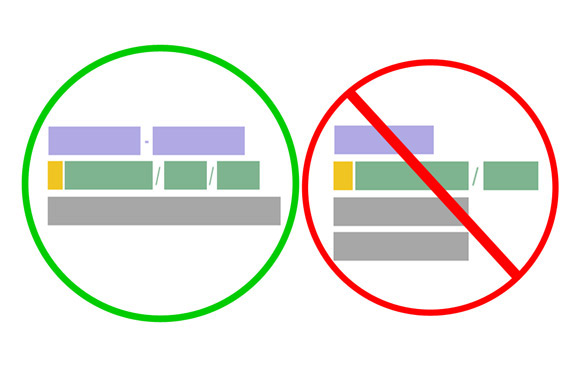Google AdWords Expanded Text Ad Character Limits & Tips
On July 26, 2016, Google launched new expanded text ads (ETA). The new expanded text ads are designed to capitalize on the change in search preference from desktop to mobile devices. The new ad format allows advertisers more control over their ads. They also provide the user with more info so they can make educated comparisons before clicking an ad.
Google provided the following image highlighting the difference between standard text ads and expanded text ads.

The expanded text ad is on the left. Notice how it has two headlines (purple), a single description field – not individual ones (gray), and optional URL paths in the display URL (green).
Google will be phasing out the standard text ads October 26th, 2016, after which advertisers will no longer be able to create or edit their standard text ads.
Manage hundreds of ads? Use Google’s AdWords Editor to migrate everything.
Google Expanded Text Ads Character Limits
- Expanded text ad titles are limited to 30 characters.
- Double-width character titles are limited to 15 characters.
- The description field is limited to 80 characters.
- The two URL path fields are limited to 15 characters each.
- URL path language does not need to match the final URL but should be relevant.
- Ad headline policies have not changed with the new expanded text ads.
Best Practices for New Expanded Text Ads
Ad Headlines
Expanded text ads increase the amount of clickable space in your ads. Utilize the character limits in order to clearly communicate detail and value to the searcher. Headlines are one of the most important components and may directly affect click through rates.
Note: Going over the pixel width will cause Google to truncate the title or description regardless of character count. Use the ad preview tool to check for truncation before the ads to go live.
A few points to keep in mind:
- Include keywords in your ad headline
- Don’t ask questions – provide answers
- Focus on your unique value proposition
- Include numbers or statistics when applicable
- Empathize
- Avoid buzzwords
- Never use puffery – it appears spammy
- Consider incorporating dynamic keyword insertion
Ad Body Copy
The ad body copy should convey value and trust. When writing body copy, use language that is consistent with your target audience.
A few pointers:
- Don’t use hard sales language in your ad
- Clearly convey your value proposition
- Utilize a call to action if applicable
- Look at Google Analytics reports to find top landing pages or insights
Transitioning to expanded text ads is important, but don’t forget to test changes before pausing standard text ads!
A Final Thought
Google ads can show above local map search results. In some cases, it might be a good idea for your business to supplement local map ranking optimization with AdWords advertising.
Ray Kirsch is a Google AdWords certified professional. Contact Ray via email to discuss your online marketing goals and prospective strategies for your business.





